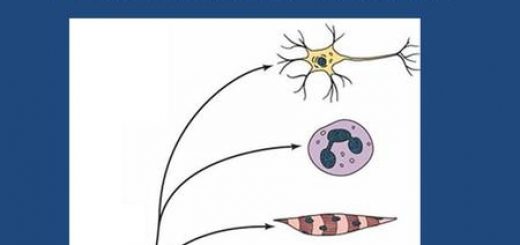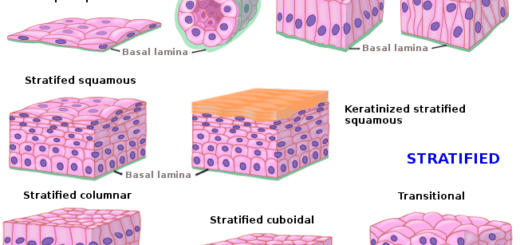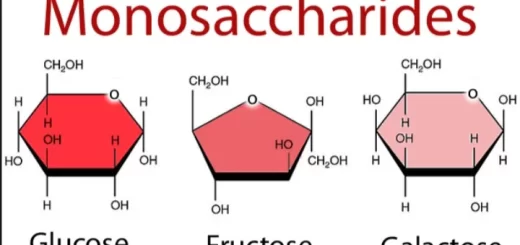Protein definition, structure, order, denaturation and Bonds responsible for protein structure
Proteins in your blood maintain the fluid balance between your blood & the surrounding tissues. It is essential in building bones, and body tissues, such as muscles. It acts as a buffer system, helping your body maintain proper pH values of the blood and other bodily fluids. Protein is crucial to good health. It participates in every process of a cell, The name of the protein comes from the Greek word proteos, meaning “primary” or “first place”.
Protein
Proteins are formed of amino acid residues (more than 100 amino acids) linked together by peptide bonds, chemically, polymerization of amino acids into protein is a dehydration reaction, they are of high molecular weight (more than 5000) colloidal in nature, non-dialysable, and heat-labile. Each protein has a unique, precisely defined amino acids sequence, amino acid sequences are important for several reasons:
- Knowledge of the amino acids sequence of proteins helps in clearing its mechanism of action (e.g. The catalytic mechanism of enzyme).
- Alteration in amino acids sequence can produce abnormal function and disease e.g. Sickle cell disease.
Protein structure
Bonds responsible for protein structure are:
I. Covalent bonds
- Peptide bonds (Amide bonds): The carboxylic group of one amino acid combines with the amino group of another amino acid (with the removal of a molecule of water). This is a rigid bond, strong, no rotation of protein molecule can occur around this bond (that connects C and N atoms), so it stabilizes the protein structure, this bond occurs in transform, and all the 4 atoms lie in the same plane (i.e. are coplanar). Peptide bonds are not broken in the denaturation of proteins i..e. on expoure to heat or x-ray or on shaking, they can be broken by enzymatic action or by strong acid or base at elevated temperature.
- Disulfide bonds (-S-S-): They occur between 2 cysteine residues in the same polypeptide chain or in different polypeptide chains, it is a very stable bong resists conditions usual for protein denaturations.
II. Non-covalent bonds
These are weak bonds, can be separated easily, however, the large numbers of these bonds in the protein molecule add up to the forces favoring protein folding.
- Hydrogen bonds are formed when a sharing of hydrogen atom occurs between the hydrogen of -NH group and the carbonyl oxygen of different peptide bonds, hydrogen bonds may be formed between polar uncharged R groups e.g. -OH with each other or with water.
- Hydrophobic interactions: The non-polar side chains of neutral amino acids tend to be introduced to the inside of the protein molecule exposed to water, they are not true bonds but interactions that help to stabilize the protein structure.
- Electrostatic bonds (ionic interaction or salt bridge): These bonds occur between the charged group of side chains of amino acids, (NH3+ of basic amino acids and COO¯ of acidic amino acids)
They are either:
a. Repulsive: If the interactions between the side chains are of the same sign, [both are (+) or both are (-)].
b. Attractive: If the interactions occur between side chains of different charges [i.e. one is (+) and the other is (-)].
The conformation of proteins (Orders of protein structure)
In its native form, protein molecule has a characteristic three-dimensional shape (primary, secondary, tertiary structure), which is required for its specific biological function or activity, proteins formed of two or more polypeptide chains have a quaternary structure.
1- Primary structure of proteins
This refers to the number and sequence of amino acids in the polypeptide chain or chains linked by peptide bonds, understanding of primary structures of proteins is important because many genetic diseases result with abnormal amino acid sequences. The amino acids sequences are read from N-terminal (amino acid number 1) to C-terminal ends of the peptide, the primary structure of proteins determines the secondary and tertiary structures which are essential for protein functions.
2- Secondary structure of proteins
Coiling, folding, or bending of the polypeptide chain leading to specific structure kept by interactions of amino acids close to each other in the sequence of the polypeptide chain, there are two main regular forms of secondary structure: α-helix and β-pleated sheets, other forms may be found.
3- Tertiary structure of proteins
It is the three-dimensional structure of each polypeptide chain, there are two main forms of tertiary structure: fibrous and globular types.
Domains are the functional and three-dimensional structural units of a polypeptide, folding of the peptide chain within a domain is independent of folding in other domains, thus each domain has the characteristics of a small compact globular protein, polypeptides that are greater than 200 amino acids generally consist of two or more domains,
The domains are usually connected with relatively flexible areas of protein. Interactions stabilizing tertiary structure include disulfide bonds, hydrophobic interactions, hydrogen bonds, and ionic interactions.
4- Quaternary structure of proteins
Certain polypeptides will aggregate to form one functional protein, proteins possess quaternary structure if they consist of 2 or more polypeptide chains, structurally identical, or totally unrelated united by non-covalent bonds (hydrogen, electrostatic bonds, and hydrophobic interaction), such proteins are termed oligomers, and the individual polypeptide chain is termed monomer or subunit, this protein will lose its function when the subunits are dissociated.
e.g. Hemoglobin is an example of protein present in the quaternary structure, it is a tetramer having 2α chains and 2β chains.
Denaturation of proteins
It is the loss of native structure (natural conformation) of protein by many physical or chemical agents leading to changes in the secondary, tertiary, and quaternary structure of proteins due to rupture of the non-covalent bonds (hydrogen bonds, hydrophobic bonds, and electrostatic bonds and may be disulphide, but not peptide bonds), with loss of biological activity. Denaturation disrupts all orders of protein structure except the primary structure.
Causes of denaturation
1- Physical agents: e.g. heating above 70°C vigorous shaking and stirring, repeated freezing and thawing, ultraviolet rays, X-rays, and exposure to high pressure.
2- Chemical agents: e.g.
- Urea.
- Alcohol.
- Salts of heavy metals as Mg+2 and Pb+2 disrupt ionic bonds.
- Strong acids and bases (extreme pH).
- β mercaptoethanol (destroys S-S bonds by reduction).
Effects of denaturation: Biological changes:
- Loss of biological activity of enzymes and protein hormones.
- Changes in the antigenic property of proteins.
- Denatured proteins are easily digested due to the unfolding of the peptide chains.
Protein Classification, Globular & Fibrous protein, Simple, Compound & Derived proteins
Protein structure, Classification, properties of amino acids & Formation of peptide bonds
Protein biosynthesis steps, site, importance, inhibitors & Protein maturation
DNA Repair types, definition & importance, Protein Biosynthesis & Genetic Code
Types of Derived lipids, Steroids, Animal sterols, Plant sterols & bile acids



